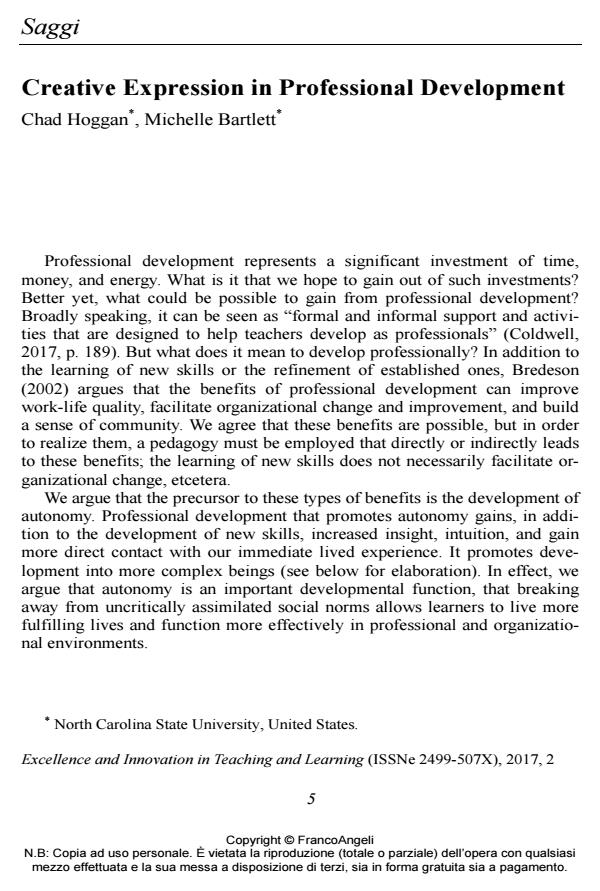Creative Expression in Professional Development
Journal title EXCELLENCE AND INNOVATION IN LEARNING AND TEACHING
Author/s Chad Hoggan, Michelle Bartlett
Publishing Year 2017 Issue 2017/2
Language English Pages 11 P. 5-15 File size 163 KB
DOI 10.3280/EXI2017-002001
DOI is like a bar code for intellectual property: to have more infomation
click here
Below, you can see the article first page
If you want to buy this article in PDF format, you can do it, following the instructions to buy download credits

FrancoAngeli is member of Publishers International Linking Association, Inc (PILA), a not-for-profit association which run the CrossRef service enabling links to and from online scholarly content.
Educational theorists have long touted the developmental benefits of engaging in creative endeavors, such as photography, creative writing, and so forth, yet few professional development programs incorporate creative expression into their curricula. This article briefly reviews the work of Fromm, Marcuse, Jung, and Heron to explore possible justifications and explanations of the developmental and organizational benefits that are possible from creative expression. This article argues that a unifying premise of these theorists is that creative expression promotes autonomy. It concludes by providing an example of how a pedagogy utilizing creative expression can meet immediate learning objectives in addition to the longer term outcome of increased autonomy and discusses how such pedagogies can be incorporated into professional development programs.
Keywords: Professional development; creative expression; autonomy; arts; organizational learning
Chad Hoggan, Michelle Bartlett, Creative Expression in Professional Development in "EXCELLENCE AND INNOVATION IN LEARNING AND TEACHING" 2/2017, pp 5-15, DOI: 10.3280/EXI2017-002001